Q&A Blog | World Wetland Day
Monica Palta
Check out this World Wetland Day Q&A blog with Dr. Monica Palta, a wetland ecologist who is focused on studying the ecosystem resilience and flux in urban areas. Her research areas are aimed at examining the relationship between human populations and water!
Q&A Blog
Published February 2, 2022
All images provided courtesy of Monica Palta.
Check out more of Dr. Palta’s work here!
Follow her on Twitter @MonicaMPalta
Your research interest is mainly the relationship between human populations and water, urban ecosystems and the influence of urban designs on urban wetland function. What triggered your interest in these topics of research?
My interest in all of these complex and interconnected topics was ignited several decades ago during a year I spent in Varanasi, India as an undergraduate student. Varanasi is one of the oldest cities on Earth, and lies on the banks of the Ganges River. The people living in Varanasi have a very complicated relationship with the river – while the river is sacred to the predominantly Hindu population in the city and provides essential resources (including drinking water) and livelihoods to the population, the poorly designed wastewater and sewage treatment infrastructure has resulted in significant water quality problems. For example, the wastewater treatment system in the city, utilizing technologies and design imported from industrialized countries, required a continuous supply of electricity to operate; in Varanasi (as is the case in many Indian cities), the city’s power is shut off during peak usage hours due to fuel shortages and/or technical issues. This results in large quantities of raw sewage entering the river each day. While living in Varanasi, I conducted a student research project with a non-governmental organization (the Sankat Mochan Foundation) under the mentorship of the late Veer Bhadra Mishra, a professor of hydraulic engineering. At the time, he was trying to get the city to adopt wetland treatment technologies for its wastewater, which utilize natural wetland processes (carried out by algae and bacteria in the water and sediments) to remove contaminants. These proposed technologies, supported by the local government but unfortunately never approved or implemented by the central or state government, were significantly more energy-efficient and contextually appropriate for Varanasi. These experiences would inform the research I have continued to pursue for the entirety of my career – I am incredibly passionate about developing sustainable and mutually beneficial relationships between ecosystems and people in cities, particularly for vulnerable populations of people, and I see urban wetlands and urban design as playing key roles in this undertaking.
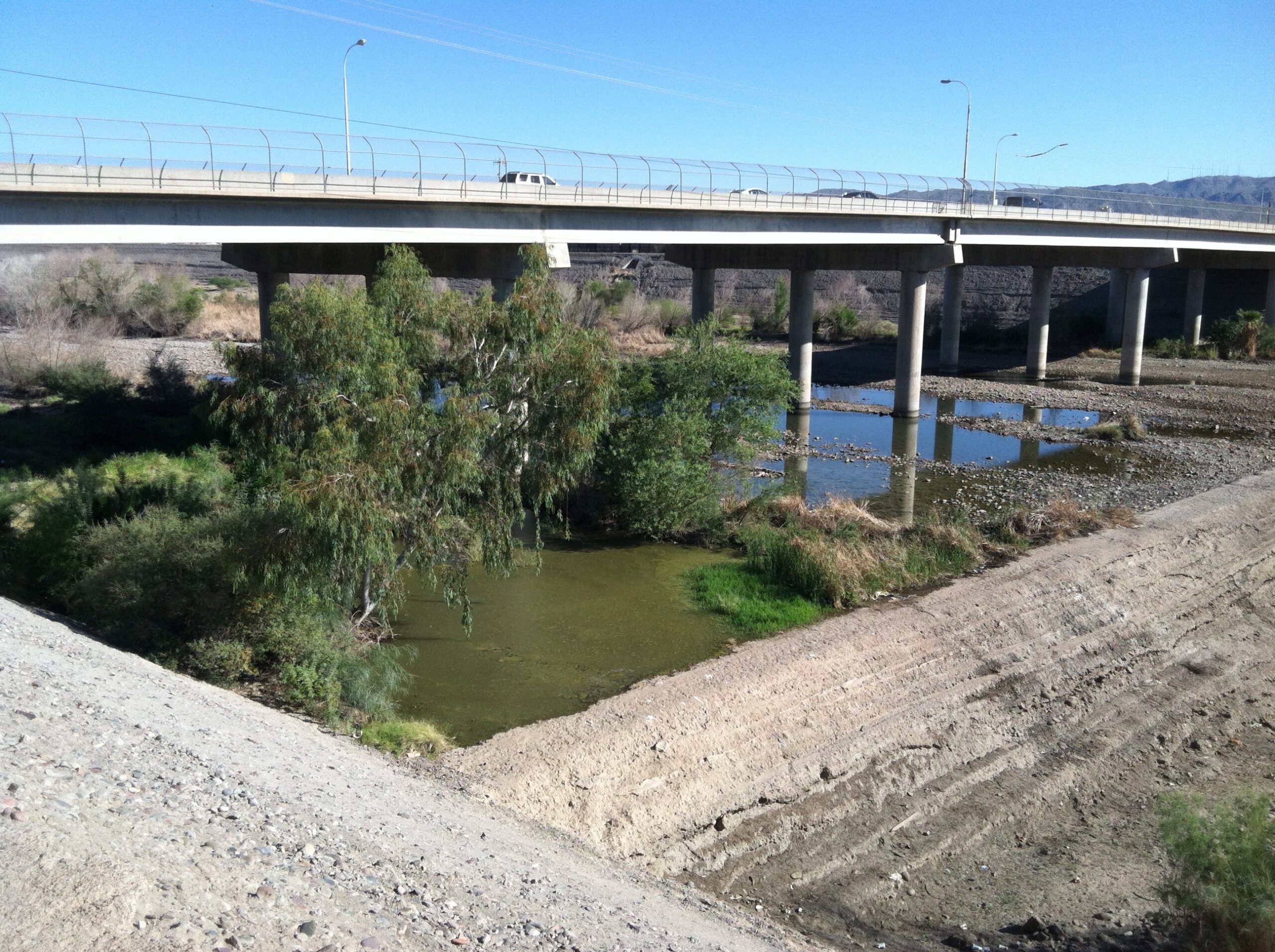
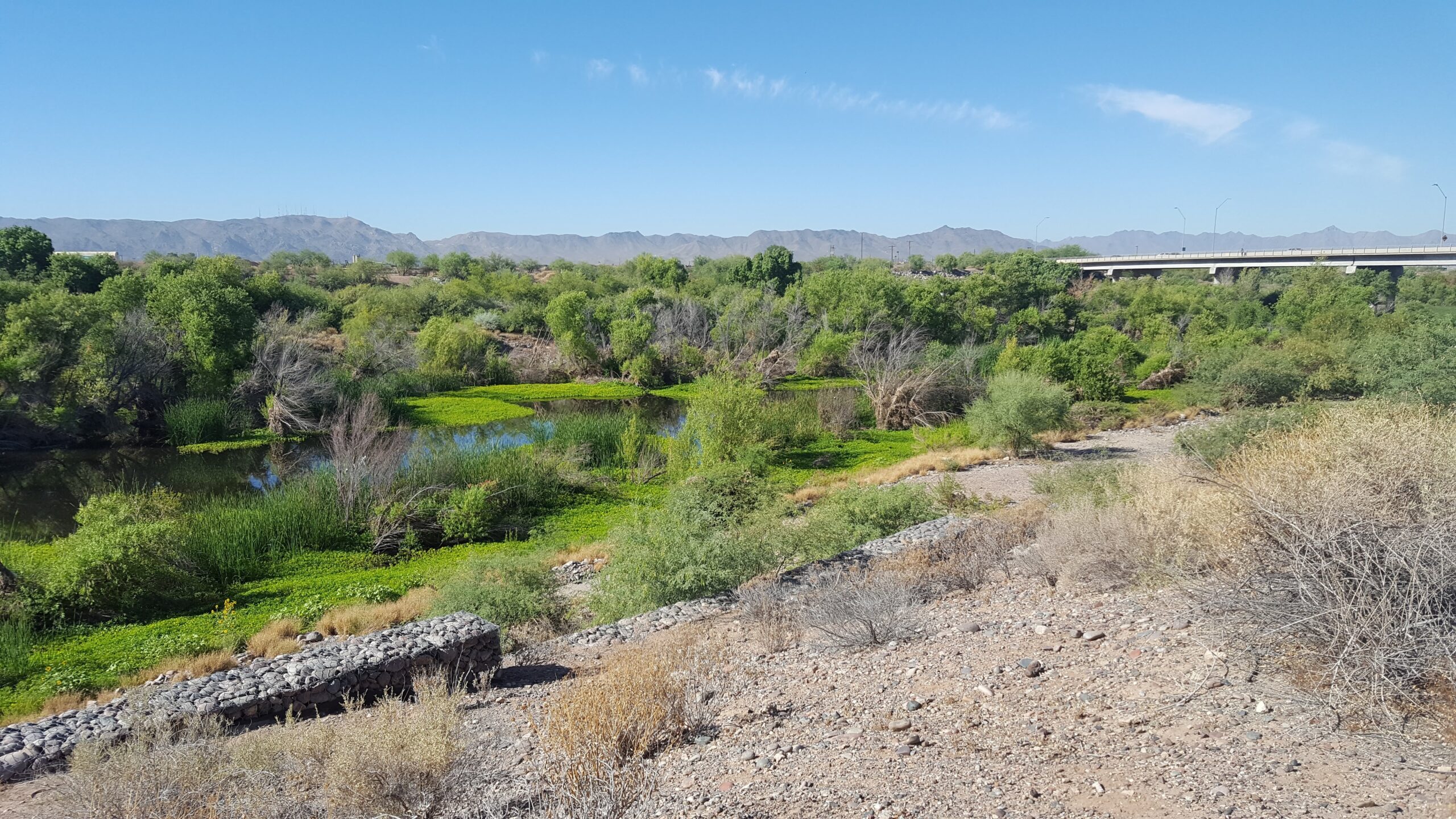
Accidental wetlands in Arizona, USA.
What challenges did you encounter throughout your years of researching wetlands?
Wetland ecosystems – especially urban wetland ecosystems – are incredibly quirky systems that can be very challenging to study. But that is what makes them so consistently interesting to me! Wetlands are inherently dynamic – they are neither a terrestrial nor an aquatic ecosystem, but both, meaning that a fundamental feature of wetlands is that they are flooded for some parts of the year and dry during other parts of the year, and the ecological functions that occur during these two conditions are going to be significantly different. This variability in water level and associated ecological functions means a lot of time in the field and a lot of storm chasing (staring at weather forecasts and the clouds outside to see if and when it might rain) to try to get your samples just at the right time to measure the processes you want to characterize. It always keeps you on your toes! I remember the first year I was a postdoc at Arizona State University in Phoenix and thought I could safely leave town for a few days of vacation (no rain in the forecast that week). When I realized that the first rainstorm of the summer monsoon season was hitting Phoenix the second night I was gone, I had to set up a field headquarters office in the bathroom of my hotel room (to not wake my sleeping roommate) as I made a long series of frantic whispered phone calls into the night, attempting to transmit detailed instructions to my field assistants and returning to “work” at 6 AM to field further phone inquiries so I could get the water samples I needed. Needless to say, I never planned a vacation before the first summer rainstorm again after that experience! Urban areas can also offer unique challenges with research. For example, water in general and water bodies in particular are usually highly regulated by many different government agencies and non-governmental organizations in cities, and getting permission to conduct research can require navigating a lot of bureaucratic hurdles. All of these challenges are worth it, however, when you get the amazing reward of generating really unique, interesting, and useful data.
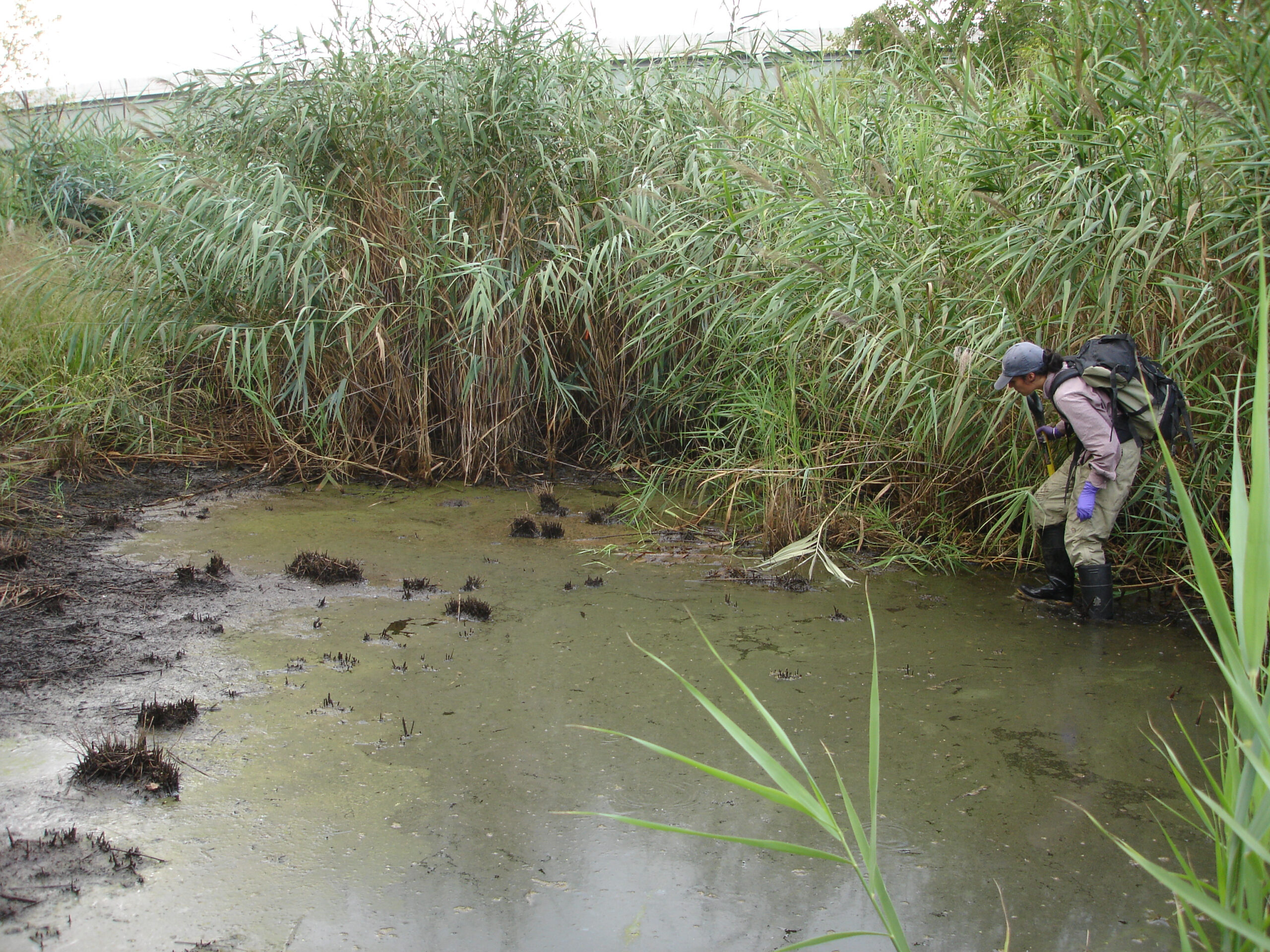
Conducting research in an accidental wetland in New Jersey, USA.
When you were/are researching the fourth type of wetland,”accidental wetland,” how were they different from the ones that naturally occur? Do you think these wetlands negatively or positively influence the environment?
Wetlands are the product of three interacting sets of factors – hydrology (i.e., the presence of standing water), vegetation (i.e., plants adapted to saturated soils and flowing water), and soils (i.e., hydric soils, which have unique properties due to the extended presence of water). In urban environments, places where we find wetland conditions can have many different origin stories, depending on the human activities within, and human uses of, the landscape. Remnant wetlands are wetlands that pre-existed human development and remain in the landscape after urbanization. There is a large range in both the extent to which remnant wetlands are impacted by humans (in terms of pollution, biological invasion, etc.) and in the extent to which they have been structurally or functionally restored by humans (e.g., by planting marsh grasses). “Accidental” wetlands are created unintentionally in urban environments as a result of human activity, typically due to the rerouting of water to vacant areas of the landscape that are low-lying and slow draining. They are not designed or maintained as wetlands, but they have wetland hydrology, vegetation, and soils due to the fact that they have standing water for extended periods of the year. I think we still have a lot more research to carry out on urban wetlands with different origin and management stories to find out how different they are from each other (if at all) in terms of structure and function. I might argue, however, that in an urban context, accidental wetlands might be just as “natural” as remnant wetlands, since they are largely self-made and unmanaged ecological systems that arise from conditions that are common to many urban environments. Since I first defined and started researching urban accidental wetlands, I have identified many benefits that they are capable of providing (nutrient removal, habitat provision, aesthetic and cultural benefits), but also some potential harms that may be associated with them (vectors of disease, greenhouse gas production, habitat for invasive species). My current work explores these tradeoffs and attempts to assess whether these environments are providing net benefit or net harm to urban populations, but there is a lot of social and ecological context involved in making this determination. For example, what constitutes a benefit or harm will depend a lot on who is using the wetland ecosystem, and in what ways.
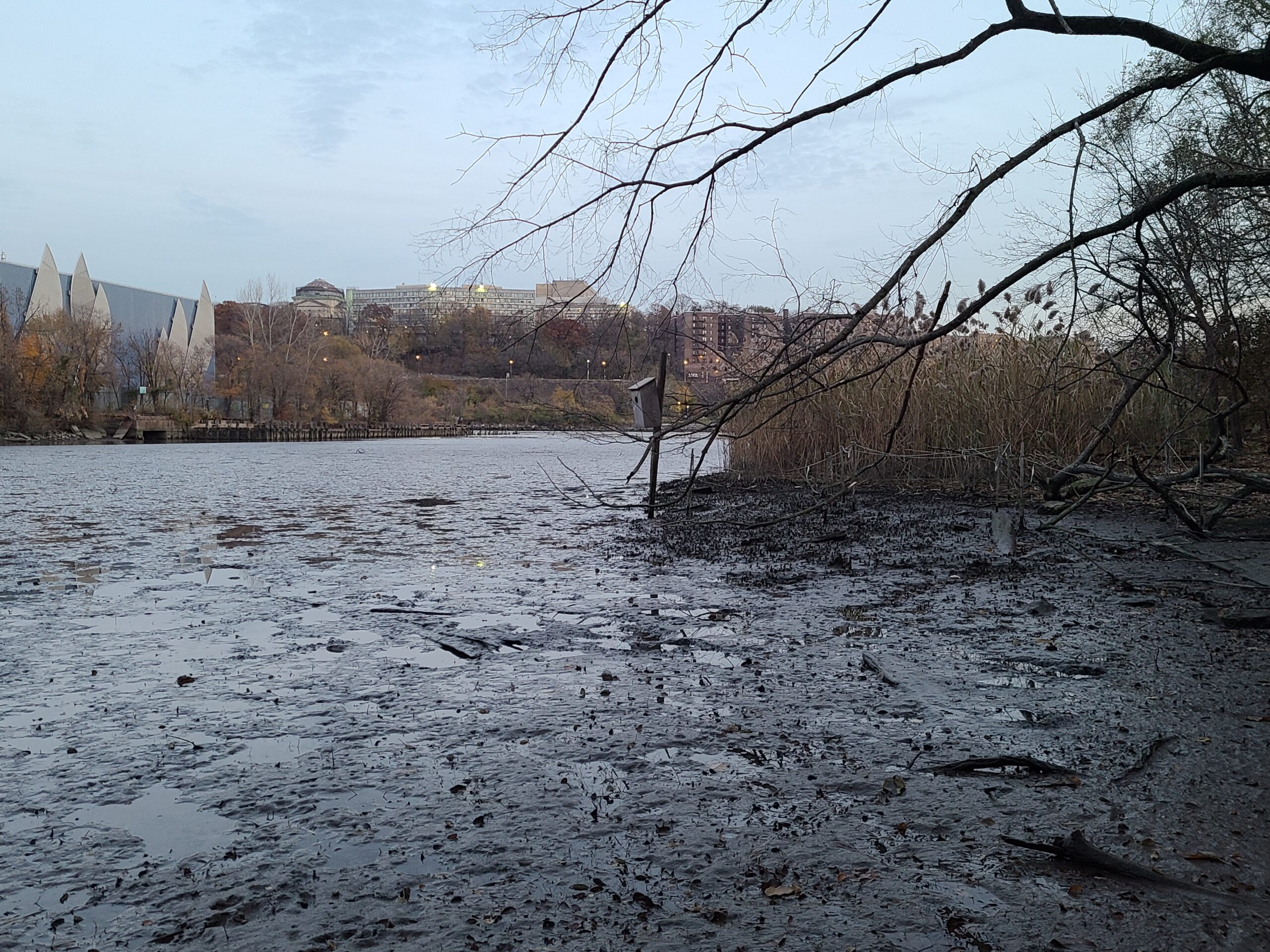
Accidental wetland New York, USA.
What advice would you give to the youth wanting to follow a similar path as you? What sources do you recommend for young students who are eager to pursue a field in researching wetlands?
Growing up in the US in an academic family, I had many privileges and opportunities available to me that I realize are not available to everyone. That being said, my career path was forged by reading and listening to scholarship on wetlands, finding incredible mentors, and spending a lot of time outside. If you don’t have access to a class on wetland ecosystems at your institution of learning, try reading some books and journal articles on wetland ecosystems, watch some documentaries, and attend as many talks and seminars as you can (there are many available for free on the internet). If you have the opportunity to attend a conference, even better! Being exposed to different kinds of wetland scholarship will not only give you a better understanding of wetland science, but also potentially spark an interest in a particular area of research, or give you an idea of what kind of career in wetland science you would like to pursue. Spending physical time in wetland environments can serve a similar purpose – walk around, notice things, ask questions, and see what captivates you, or what strikes you as odd (I always strongly relate to the quote by Isaac Asimov: “The most exciting phrase to hear in science, the one that heralds new discoveries, is not ‘Eureka!’ but, ‘That’s funny…’”). And finally, finding good mentors is so important to your success as a scientist, especially mentors who are passionate about the work they do, encouraging of your creativity and inquisitiveness, and supportive of you and your career. Taking as many opportunities as possible to talk to your teachers and professors, and to other wetland scientists you meet in the course of your scholarship, can lead you to some wonderful mentors. A few organizations and opportunities you may want to check out are the Society for Wetland Scientists (https://www.sws.org/) and Wetlands International (https://www.wetlands.org/), both of which have a number of great resources on their websites, and the International Association for Ecology’s (INTECOL) annual wetlands conference (http://intecol2021.org/).
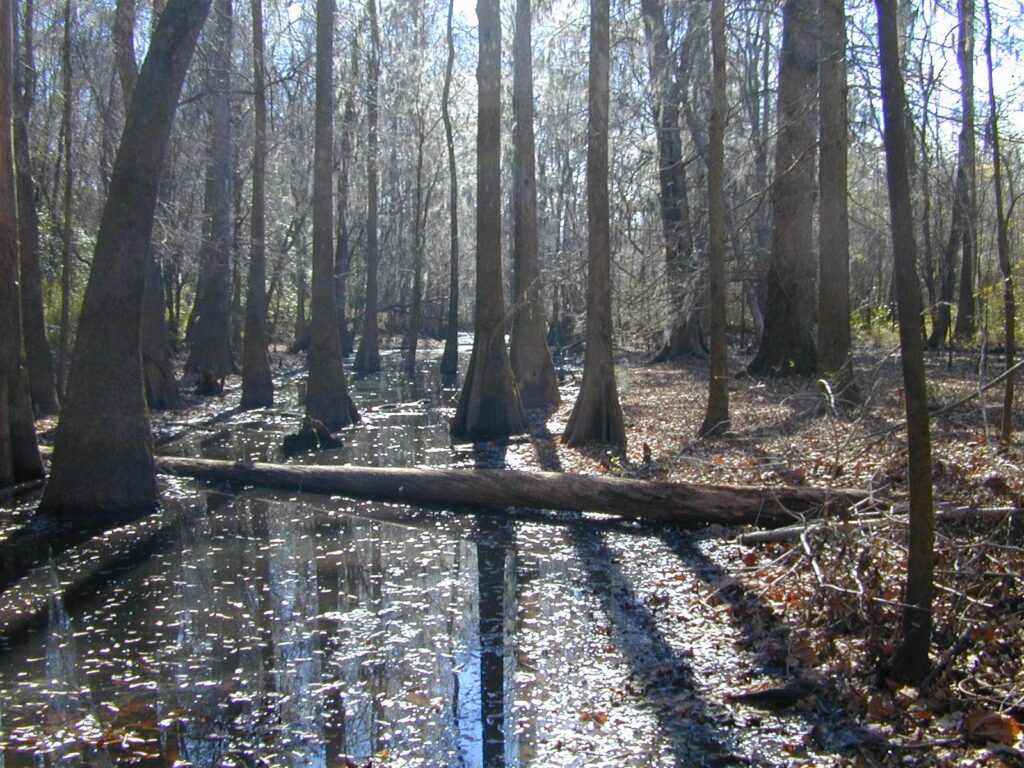
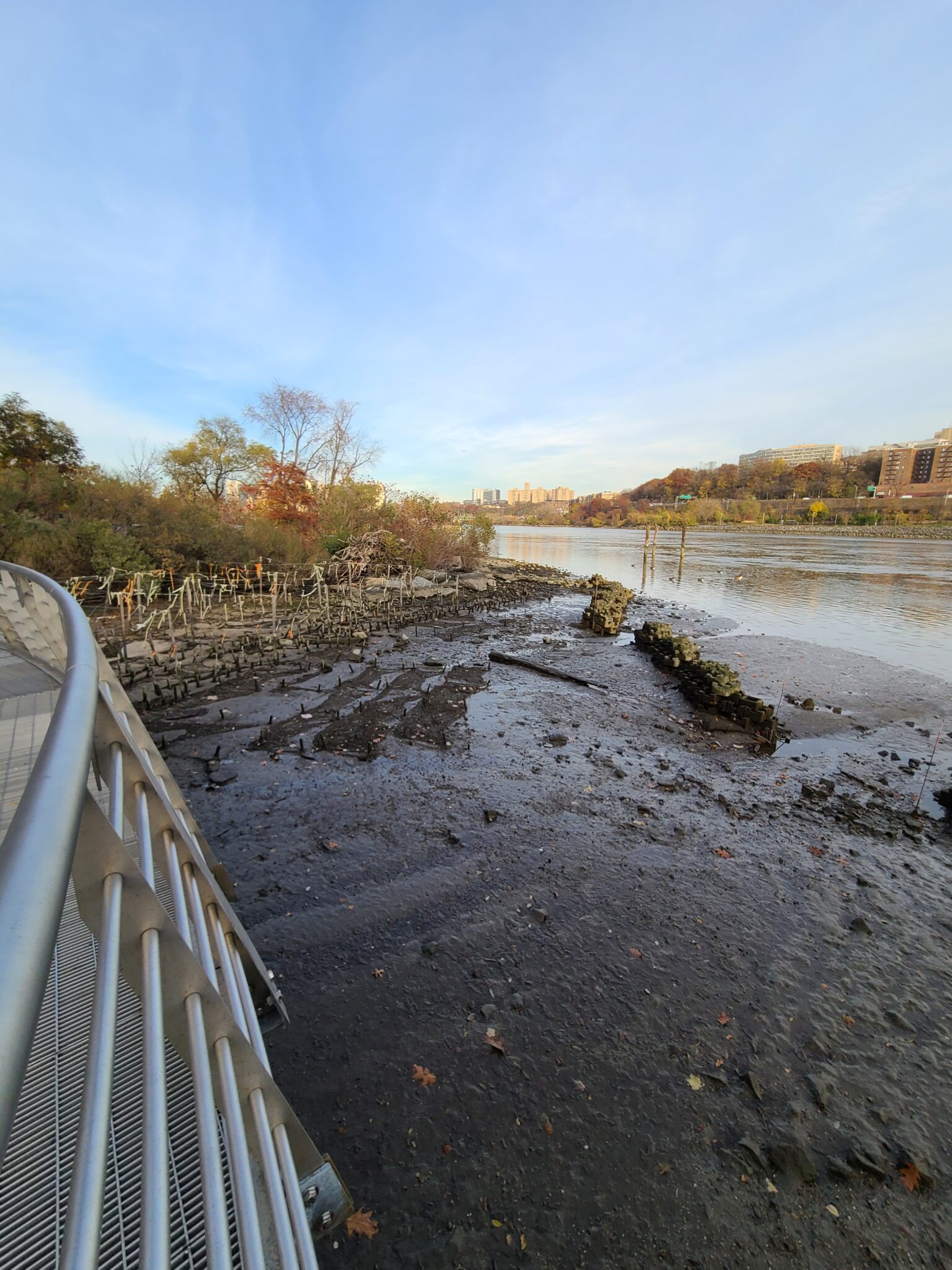
Left: Savannah River floodplain in Georgia, USA. Right: Restored wetland in New York, USA.
As a wetland scientist, what do you think are the essential qualities needed to observe, research and analyze these environments?
First and foremost, I think you need to be open to the idea of studying an ecosystem that is always changing and never the same at any given time. Wetland processes are not only highly dynamic, their dynamics can occur over very short periods of time – a wetland can change from completely dry to fully flooded in just a few hours, from being dominated by aerobic (high oxygen) microbial processes to anaerobic (low oxygen) microbial processes within less than an hour. This is radically different from a forest or a lake, where you tend to find much more consistent, predictable conditions over a one hour or one day time period (or even an entire season). Wetlands can be very spatially heterogeneous as well – they are typically composed of interacting patches of vegetation or soil that have very different biological and chemical conditions. For this reason, I have found that many of the methods designed to study water, soil, air, and organisms in either terrestrial or aquatic systems often do not work for wetland ecosystems. To make really good observations and design good research and analysis around wetlands, you have to give some thought to how you are going to capture their ever-changing conditions and dynamics, and this requires a lot of patience, flexibility, and creativity – you have to think outside of the box! For me I feel like it’s a really exciting puzzle that I’m constantly trying to solve
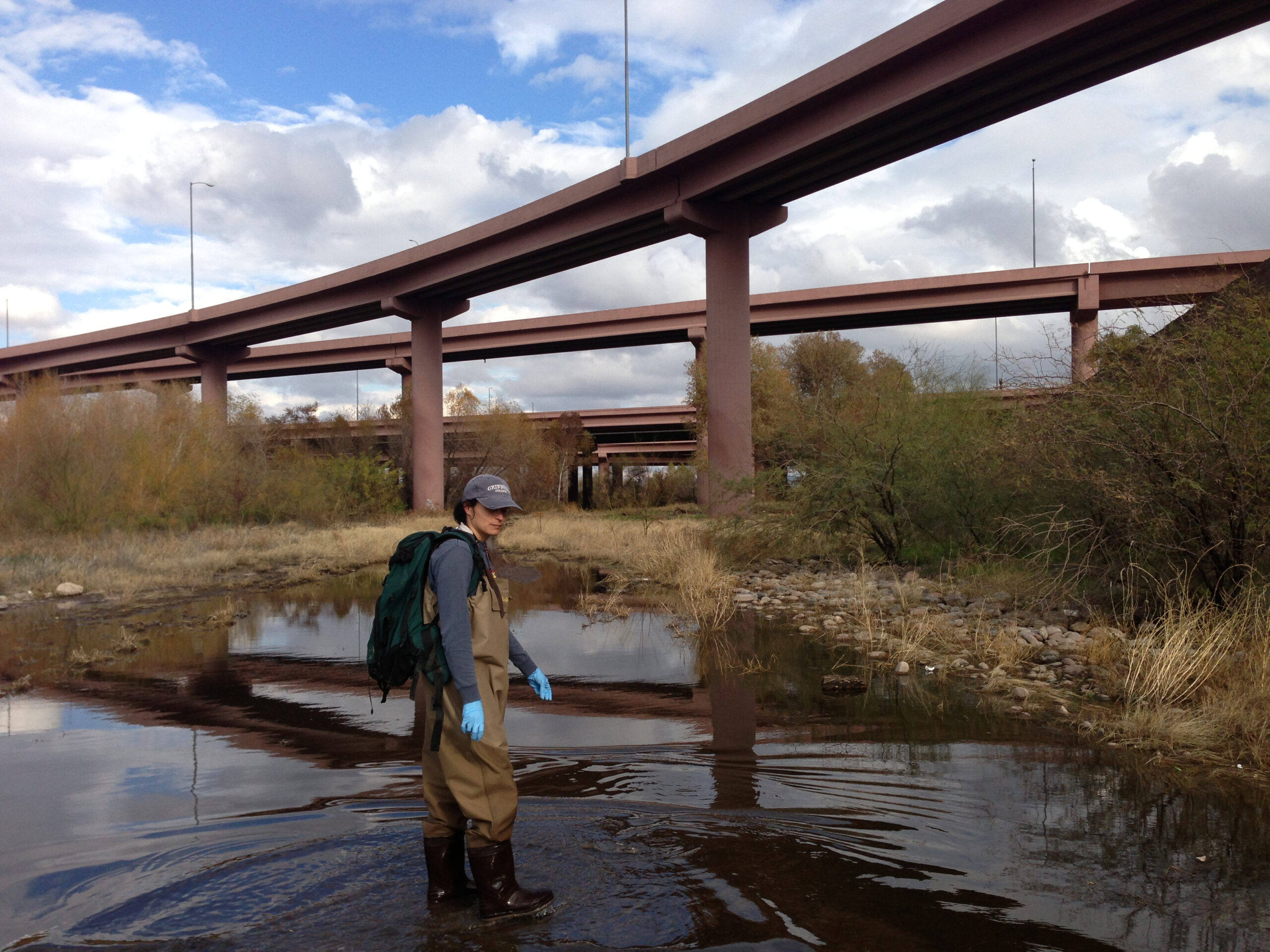
Conducting research in an accidental wetland Arizona, USA.
What inspirational message would you give young women to inspire and encourage them to pursue STEM?
It can be hard for any person who is of an identity that is underrepresented in STEM to feel like they belong or can succeed in these fields of study, and the STEM fields still have a lot of work to do to become more diverse, equitable, and inclusive. But your talents, perspectives, and experiences are so valuable, and absolutely essential to innovation in STEM! A career in STEM can be fun and rewarding for anyone with an inquisitive mind and a desire to make a difference in the world, but remember also that the STEM fields need you – your unique ideas and contributions – to continue to advance.
During your 15 years of researching wetland, river, and stream systems, can you recall an experience that you’ll never forget?
There are so many unforgettable experiences that I have had researching wetlands, rivers, and streams, almost all of them during some kind of fieldwork I was conducting for a research project. It’s hard to narrow it down to just one! I can remember so many exciting instances of seeing an interesting new animal for the first time – a cottonmouth snake, an American alligator, a great blue heron. So many beautiful boat rides to a field site where you see a gorgeous sunrise and smell the unmistakable smell of sulfur-reducing bacteria doing their thing (maybe you too have smelled rotten eggs when you’re driving by a marsh?). My favorite and most unforgettable research experiences, though, have been the many, many fun and hilarious adventures I have had working in the field with my mentors, colleagues, and friends – having a 5 minute dance party at 5 AM in waders to get pumped up for the day, laughing until we cry from silly wetland puns we are making to pass the time as we measure hundreds of Spartina leaves or sample soil, getting covered in mud as we work together to get a field vehicle unstuck – those memories will last a lifetime.
